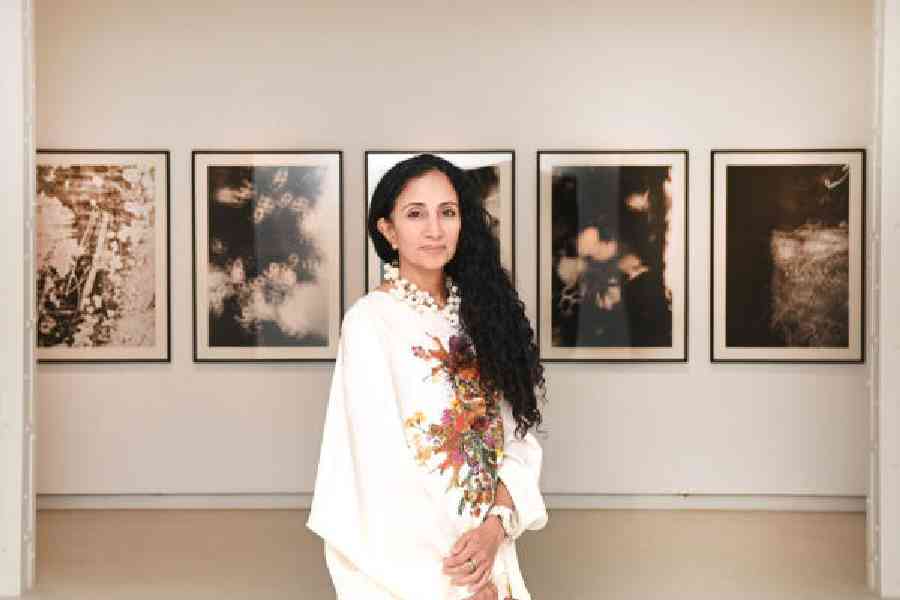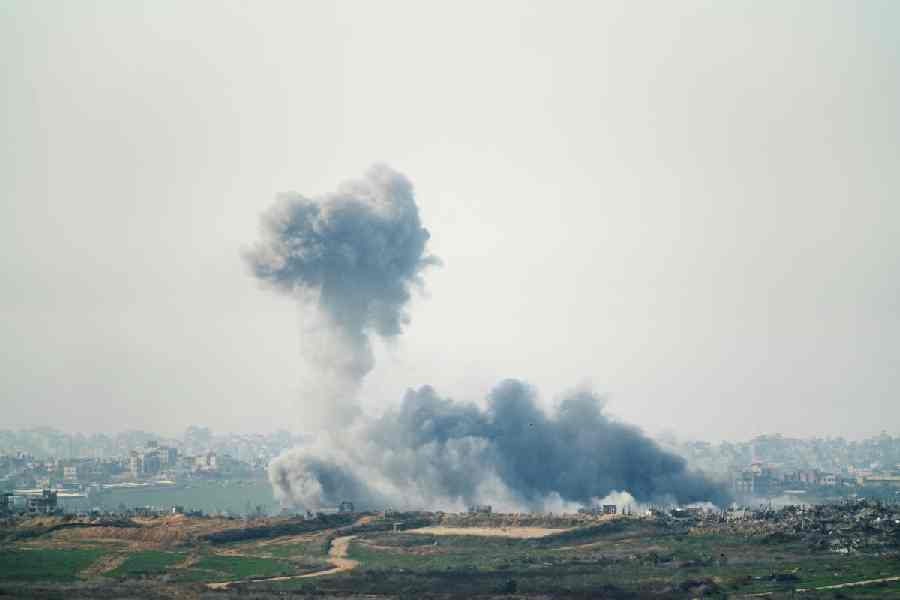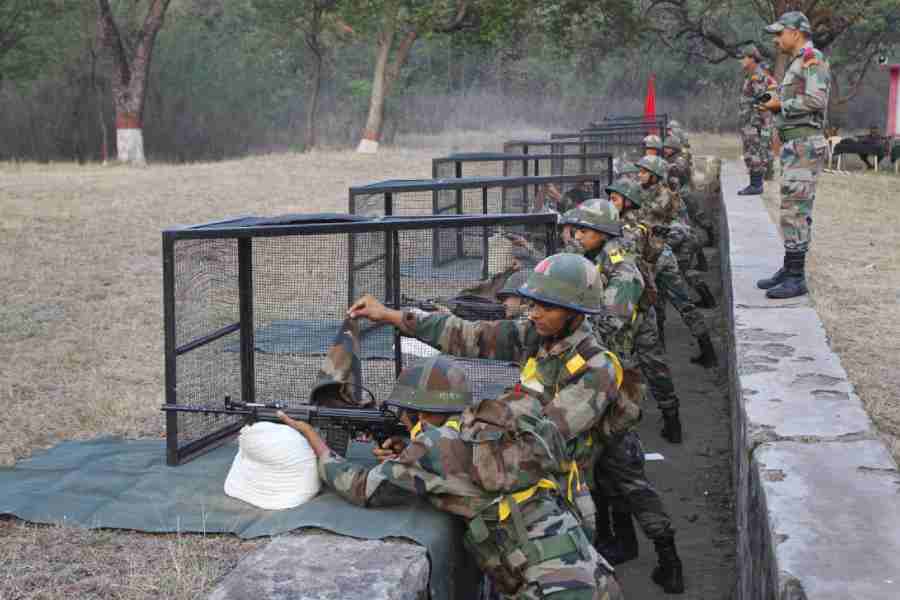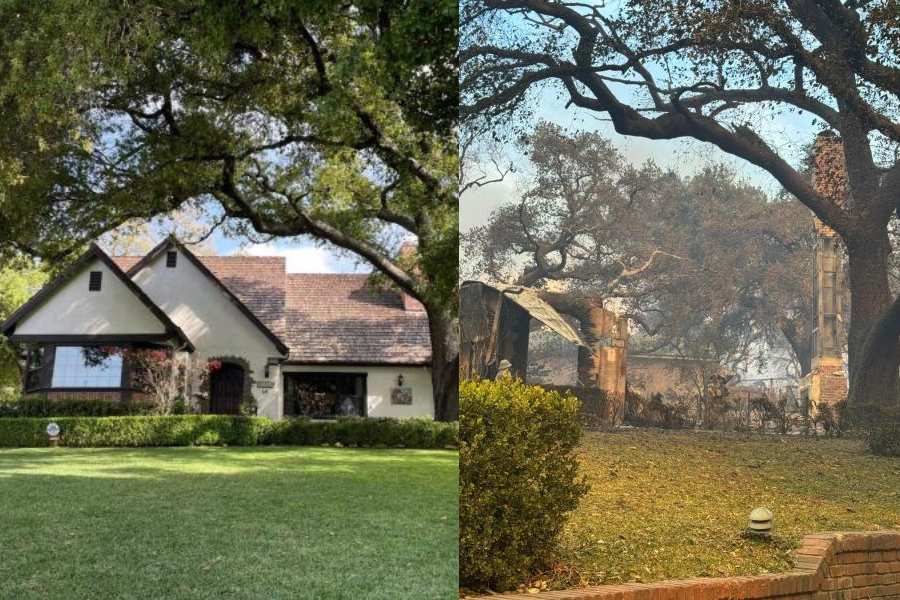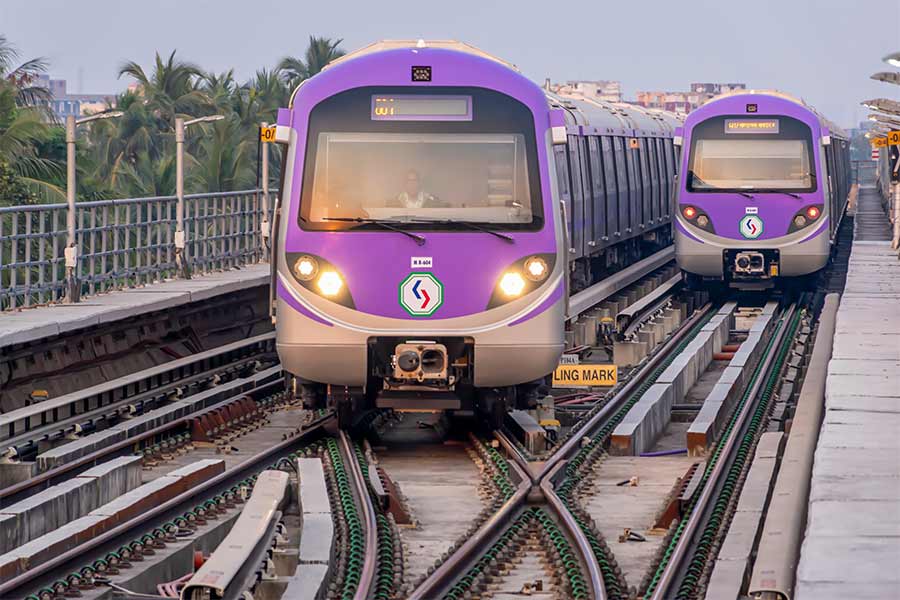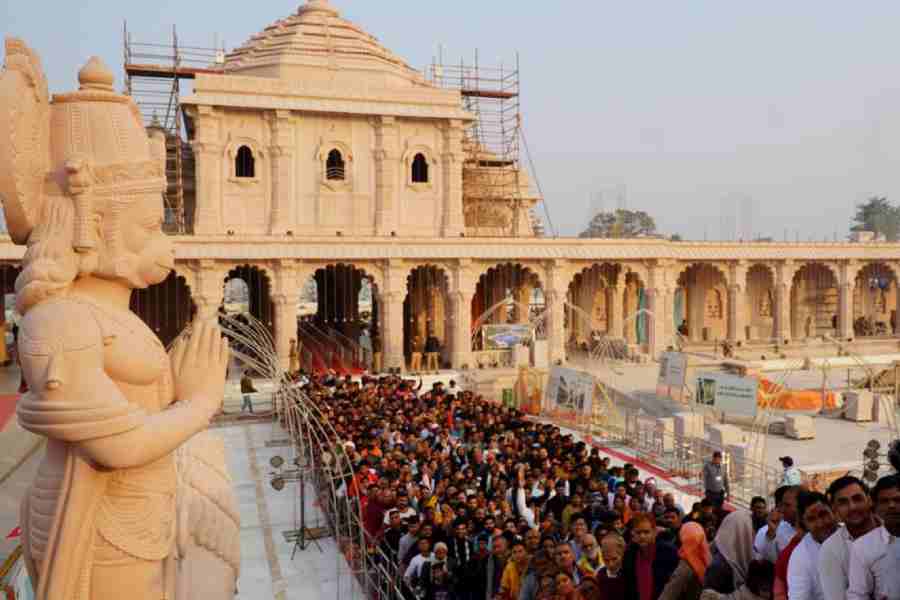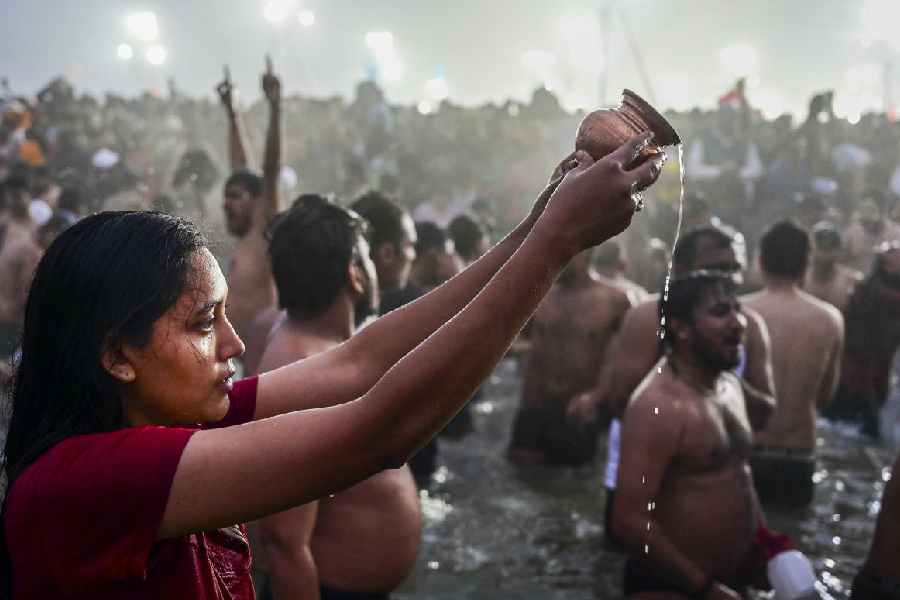Suruchi Choksi talks with an enviable calm, her voice so soothing that it will remind you of the play of sunrays on a sparkling river. The multidisciplinary artist was born and brought up in Calcutta and her family still lives here, her parents, her elder sister, the famous fashion designer Anamika Khanna. She is the middle born, with jewellery designer Suhani Pittie following her. Currently based in Mumbai where she has lived for 30 years now, Suruchi feels over time, her “affinity towards Calcutta, its culture, the essence of the city” has kept “growing”. In town with her solo exhibition, ‘Conjuctions’ at Art Exposure, also her debut in Calcutta, she says it really is “like a homecoming”. “It’s been 12 years of this kind of serious work where I have been wanting to meet the world as a fine artist,” Suruchi tells us. She has shown at Tarq gallery in Mumbai, The Loft (Anupa Mehta’s advisory) and then through The Loft, her work has been exhibited at India Art Fair and Kochi Biennale. Deeply thoughtful, she likes to read and listen to a lot of poetry, reads a lot of literature and monographs on artists. In a free-flowing chat, Suruchi tells us more about her practice and art.
How did your journey with art start?
I am self-taught as an artist. I studied business and marketing in Calcutta with every intention of joining my family business. When that didn’t happen, I started to teach myself a lot of softwares, including Photoshop, CorelDRAW. I started to paint as a hobby. I was just dabbling and was never doing it with the seriousness of seeing myself as an artist in the future. When I got my camera, however, and started to make pictures is when I saw that it’s possible for me to consider my photographs as an art form. I was doing fine art photography and street photography and it started to feel like a calling. It became a joyous process. Simultaneously, I kept on with my paintings and because I had familiarity with all the softwares, working with photographs and mixed media, it became easy and quite comfortable. That’s why I like to say that I am multidisciplinary because there is a lot of comfort working across different mediums, just attending to what needs to be said or expressed and then finding the best medium for it, be it through photographs, painting, sculptures or video art that I love to make (laughs).
You are showing in Calcutta for the first time...
I took a sabbatical for some years. For the last five-six years, I was making art, but not proactively exhibiting or reaching out to galleries. I wanted to regroup my own self, my ideas and what I wanted to say. In the meantime, two books happened. One book is a translation from English to Hindi, a book of Buddhist teachings. Svayam Se Parichay from the English book, Into the Heart of Life by Jetsunma Tenzin Palmo. During Covid I started to write poetry, which was also the time of a big shift in my personal life. That poetry combined with my paintings and photographs has become an artist’s book, called Emptying the Void, which will hopefully be released during the India Art Fair. It was pre-launched at the show.
Tell us about ‘Conjunctions’...
The whole point is to understand causality and the dependent nature of our own reality. We are so deeply interdependent and interconnected. This show is an exploration of that interconnectedness, both at an absolute level and a relative level. In Buddhism, we talk about two truths, the absolute truth and the conventional truth and both are in a way parallel and linked. You cannot deny either. At an absolute level, the show explores ideas of emptiness, that nothing has any inherent existence, shunyata, and because there is a shunyata, everything is impermanent, no-self and therefore because it is all interdependent, we can’t say that anything arises in and of itself. So, those are the kind of themes that the show explores, in various ways. There is a sculpture, a lot of text-based work, paintings exploring impermanence, photographs that speak of interdependence, where I culture food and allow life to grow on it and I photograph it. There will be a bowl of soup and I’ll call it ‘Cosmic Reality’, how stardust can be found in a bowl of soup and when we consume it, how we ourselves are made of that stardust. So, it’s constantly zooming in and out, seeing the micro and the macro as deeply interlinked.
How did you discover Buddhism?
I am majorly into Buddhism and meditation and study and contemplation as much as practice. I think I always had a contemplative bent and this quest and curiosity, that quintessential existential question that who am I and why I am here. I was born into a Jain family, quite devout and I had great appreciation for it, but I felt that the answers I was seeking were not coming to me readily. When you are young, you want answers which are accessible in a language which is accessible, someone to kind of show you the way.
I discovered Buddhism perchance, actually. I had gone to Dharamshala for a yoga retreat and it was a door opening into a place called Deer Park Institute in a village called Bir, near Dharamshala. I walked through that door and since then doors have simply been opening to a point where I now run an institute in Kalimpong called Buddha Pada Institute (where she is the administrator). I work for my guru who is a reincarnate Buddhist lama called Dzongsar Khyentse Rinpoche. He is also a filmmaker, so he has great appreciation for art. That’s why I do it with so much confidence that both are okay, that I can be a full-time administrator and artist. I am based in Mumbai and I visit Kalimpong from time to time.
My Buddhist journey came at a time when I was going through a personal crisis and it came as a big blessing and it’s only been making my life better. I was just standing, waiting for it to happen...
You surrender...
Surrender... that’s the word. I just surrendered and all this amazingness has come my way.
As an artist, what do you do to get that balance?
We call all of this practice. Life as practice. It’s not like you perfect yourself or it can happen overnight. It’s work in progress and I look at my meditation practice and contemplation not as something separate, which is done on a cushion and then you go back to reality which is different. For me, this idea of no-separation is very critical, that what you meditate on is just looking at your own mind and becoming familiar with its workings, so that when we operate in life, you are able to see yourself more clearly and when we can see ourselves more clearly, we are able to see everyone else more clearly, as well.
This is tough to execute...
I promise you it’s doable. Not that I don’t fail, I have my fallible moments, but the access to insight is much easier. I love to put myself in other people’s shoes. That for me is how my meditation and contemplation have helped me, to really say that I can come with a not-knowing mind and still be equanimous. Sometimes, we are restless because we need to know the answers and we need to have control over everything. When we surrender to whatever is arising, everything becomes beautiful.
How have you conquered your personal fears?
For a long time, I have suffered from impostor syndrome and many of us do it seems, when I speak to people, and they talk about their impostor syndrome. It’s not like I have figured it all out. Again, my practice brings me to that place of acceptance. We are usually caught up in worldly concerns of praise and blame, pleasure and pain, loss and gain. When one frees oneself from those kinds of attachments or aspirations, automatically fear is gone. Say, that I am willing to be vulnerable, expose myself to the world in this way, this is my offering, done with good intentions and it’s for the world to see or not see, to accept or not to accept. Again, there are so many causes and conditions behind why that happened.

